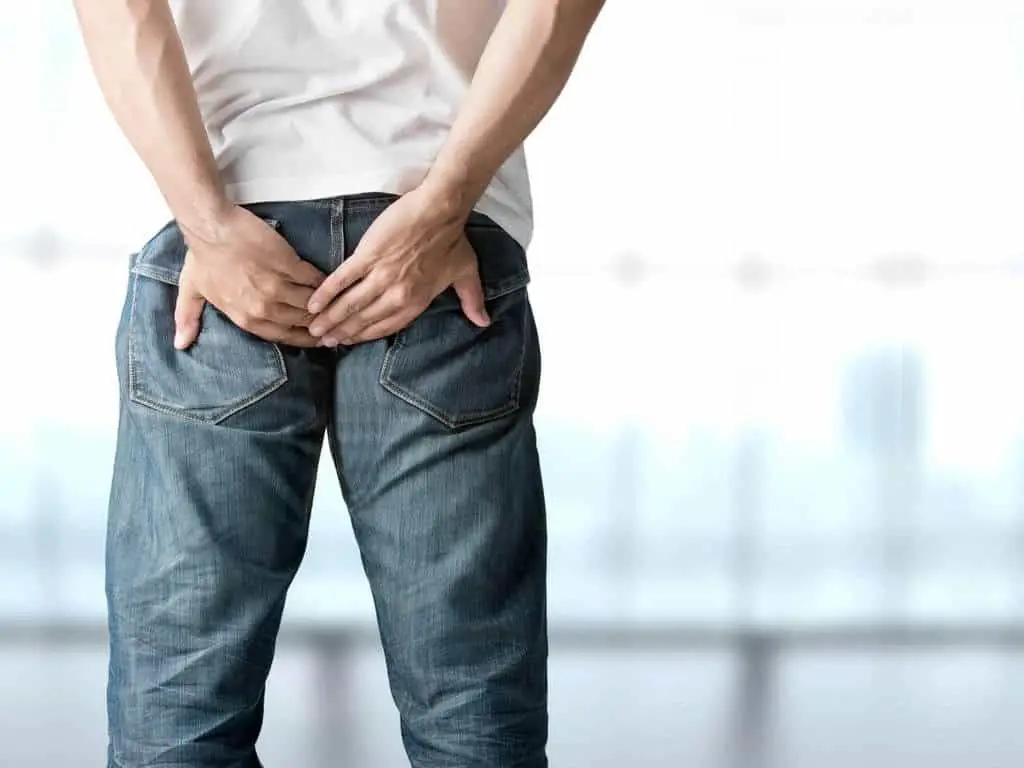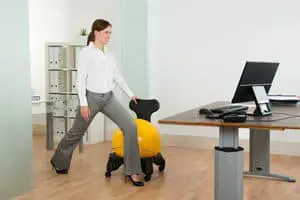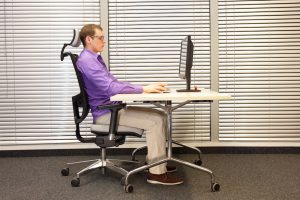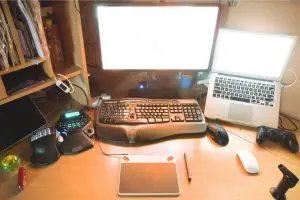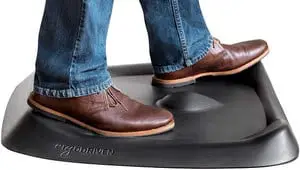Did you know that hemorrhoids are very common in both men and women? According to the U.S. National Library of Medicine, about half of all people have them by age 50. Considering that most people need to sit at work for a living, this issue is something that many have to deal with.
All content and media on Office Solution Pro are created and published online for informational purposes only. It is not intended as a substitute for professional medical advice and should not be relied on as health or personal advice. This post may contain affiliate links.
How to sit comfortably with hemorrhoids (piles)? The best way to sit with hemorrhoids is to use a soft pillow or an inflatable cushion shaped like a donut. Doing so prevents the already swollen veins on your buttocks from stretching further, especially when sitting on a hard-surfaced chair.
Nonetheless, there are many more things you can do than just learn the best sitting position for hemorrhoids. In this post, we will go over how to sit with hemorrhoids the right way. Acquiring the correct information and putting them into practice is important to achieve maximum productivity daily.
What Are Hemorrhoids?
According to the Mayo Clinic, hemorrhoids, also called piles, are swollen veins in your anus and lower rectum. There are two types of hemorrhoids. Internal, develop inside the rectum. External, develop under the skin around the anus. Both may cause a considerable amount of pain.
What Are the Symptoms of Hemorrhoids?
1. Internal Hemorrhoids
Internal hemorrhoids are swollen veins that develop inside the rectum. Often, you don’t see and feel them. However, you may experience painless bleeding during bowel movements. You might also notice blood on your poop, on toilet paper after you wipe, or inside the toilet bowl.
2. External Hemorrhoids
External hemorrhoids are swollen veins that develop under the skin, and around the anus. An external hemorrhoid can run the risk of causing severe pain, swelling, and inflammation when blood pools form a clot. The symptoms of external hemorrhoids may include:
- Pain and discomfort
- Swelling or bleeding
- Consistent itching around your anal region
Hemorrhoids are one of the most common causes of rectal bleeding. Generally, they’re not dangerous, but the best thing to do when dealing with piles is to consult your doctor or physician, even when you don’t feel pain. Hemorrhoids often go away on their own, but treatments may also help.
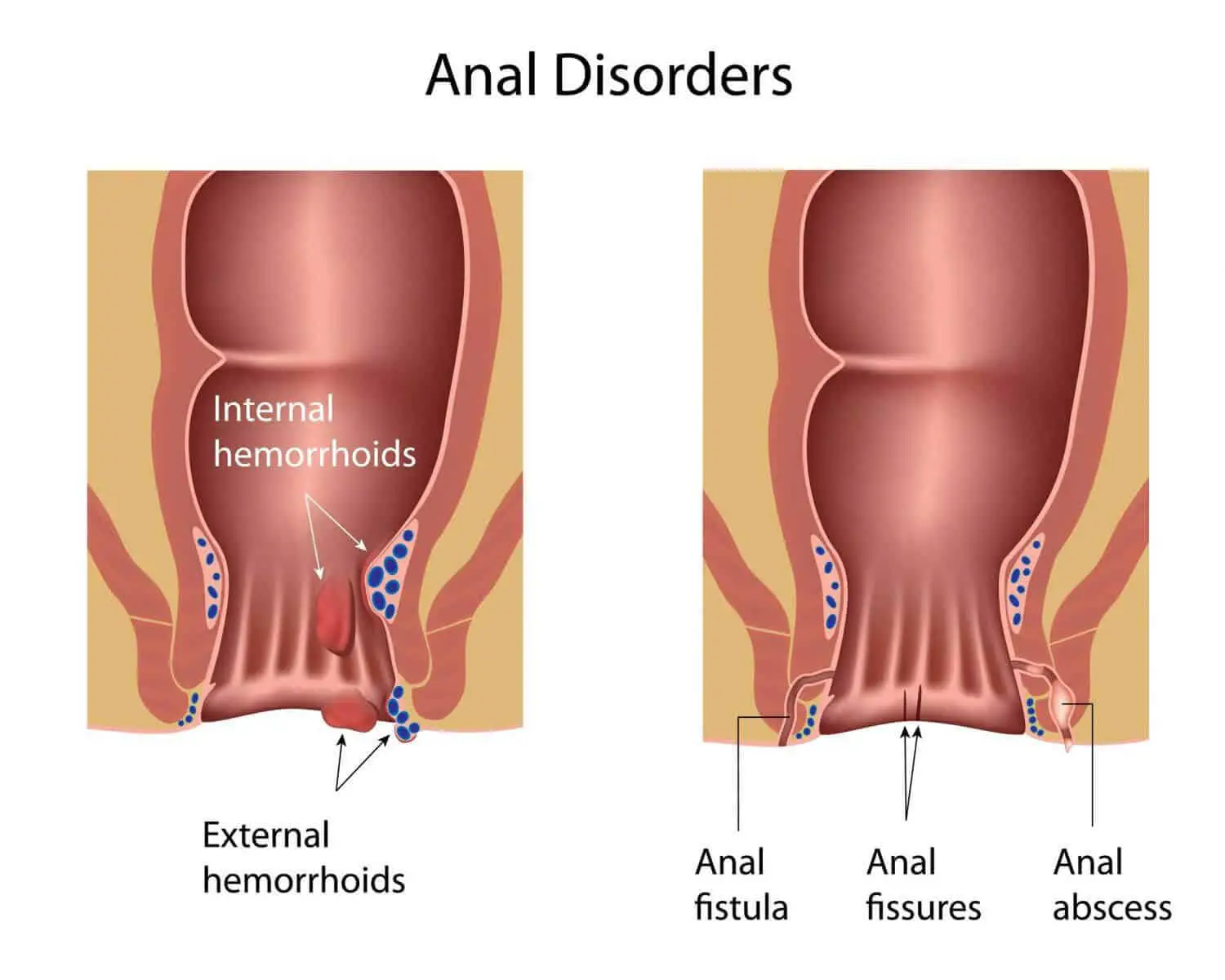
What Are the Causes of Hemorrhoids?
Enlargement of the veins around the anus causes hemorrhoids. You are more likely to get hemorrhoids if other family members, like your parents, had them. While it’s hard to pinpoint the cause of hemorrhoids, it can develop from increased pressure in the lower rectum because of:
- Sitting for too long
- Straining during bowel movements
- Chronic diarrhea
- Regular heavy lifting
- Being overweight
- Being pregnant
Hemorrhoids are most common among adults aged 45 to 65 years. Nonetheless, this doesn’t mean that young people and children don’t get them. According to Medical News Today, you may develop piles when you have constipation or diarrhea that doesn’t clear up. Sneezing and coughing could make them worse.
How to Sit with Hemorrhoids
There’s nothing to be ashamed of when you’re dealing with hemorrhoids. However, certain activities, like sitting, can be troublesome. Considering that many of you need to work at the office while sitting in a chair, let’s look at some of the things you can do to find comfort. Here are the 5 best ways to sit with hemorrhoids:
1. Use a Hemorrhoid Sitting Cushion
If you are prone to hemorrhoids, sitting in a hard chair for long periods can trigger the condition. Try to sit on a chair with softer padding rather than a hard one. If you can’t find a softer chair, use a pillow or cushion under your buttocks when sitting on a chair, especially when working behind a desk.
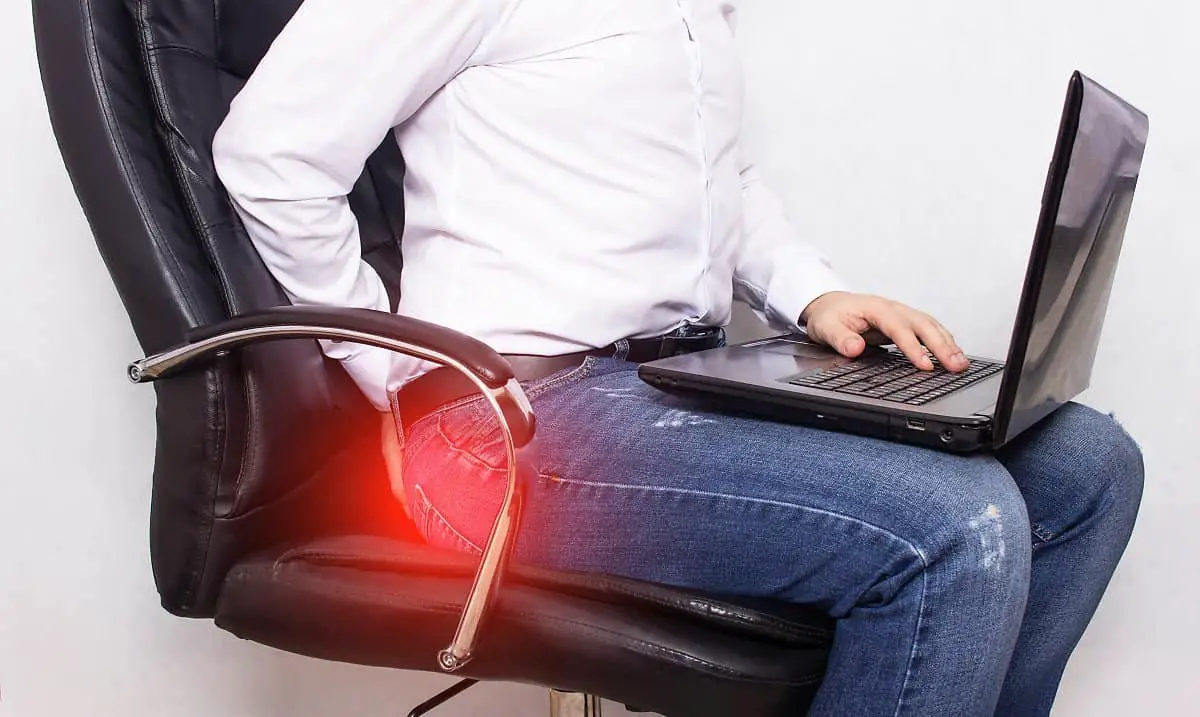
Sitting without an ergonomic “donut” pillow may cause pain, especially during long hours.
The best thing you can do, however, is to try an ergonomic hemorrhoid cushion. Also known as the ergonomic donut pillow. These seat cushions are designed for anyone who has had surgery or suffered an injury in the anal region. You might want to try them and see what works best for you.
What’s best about these pillows is that you can bring them anywhere. You can use it while driving, or you can use them at the office. We found one on Amazon that is ergonomically designed and highly recommended by famous physical therapists. You can check it out right here (link to Amazon).
2. Elevate Your Legs with a Footrest
Many people have reported more comfort when their legs are raised, creating a half-squatting position. Squatting with your knees against your stomach creates better alignment of the body. Not only does this help relieve pressure when sitting, but it may also help speed up the process of bowel movement.
Experts believe this position significantly reduces the likelihood of developing hemorrhoids. If you need to sit for long hours, you can try using a pile of books or an ergonomic footrest to help elevate your legs. Doing so may remove pressure from your anal region.
3. Keep Your Lower Body Cool and Dry
If you’re dealing with hemorrhoids, you probably know that standing, especially sitting, for long periods may cause uncomfortable itching due to sweating inside the butt cheeks. This may develop into irritation if you leave it for too long. It’s important to keep the area below the belt cool and dry.
The best thing you can do is to wear breathable clothing, including undergarments made of breathable fabrics like cotton. If the ones you’re wearing becomes damp from sweat, change into a fresh pair of underwear immediately. Remember to move around once in a while in between sitting times. Not only does this promote healthy movement, but it can help bring airflow into the lower region as well.
4. Stay Hydrated
Consistent straining while sitting on the toilet for long periods is one of the biggest reasons for hemorrhoids. This is due to increased pressure on the veins in and around your anus. To combat this issue, remember to stay hydrated and drink plenty of water throughout the day. A good rule of thumb is to drink 8 cups of water daily.
According to Harvard Medical School, it’s also important to add more fiber to your diet. Dr. Jacqueline Wolf, a gastroenterologist and associate professor of medicine at Harvard, recommends trying a psyllium husk fiber supplement to get an additional 20 to 30 grams of fiber per day.
After consuming this psyllium husk powder (preferably in the morning), you should be able to maintain regularity. When you feel the urge, go to the bathroom immediately; don’t wait for a more convenient time. Putting off bowel movements can worsen constipation, which then aggravates the problem.
5. Clean Your “Zone” Regularly
Lastly, always keep your rectal area clean at all times. Regular cleaning and drying can help soothe your hemorrhoids. Instead of using regular toilet paper, you can try wet wipes instead. Not only are these wipes smoother, but they tend to be less abrasive than standard toilet paper. Watch out if you have a septic system; flushables are not good for septics.
Don’t overlook the relief offered by sitz baths (a basin that allows you to soak only the target area), especially after a long day of work. Choose the best sitz basin and soak with warm water for 15 to 20 minutes. This prevents the oversaturation of the skin. You can also soak yourself in a regular bathtub as well.

Related Question to Hemorrhoids
1. Is sitting bad for hemorrhoids?
Prolonged sitting can increase the risk of developing hemorrhoids, especially sitting in the toilet for too long. Not only does sitting increase the risk of piles, but also other conditions like heart disease. Try to take frequent breaks from sitting to stretch and move around, once every 30 minutes.
2. How to shrink hemorrhoids fast?
Your best bet to treat hemorrhoids that cause pain is to consult your doctor or physician. Not only will you get the proper diagnosis, but you will get the right treatment plan as well. With that said, there are some simple ways to shrink hemorrhoids fast, including:
- Topical treatments – over-the-counter hemorrhoid cream can provide fast relief from piles. Regular cleaning is also important to prevent itching and irritation.
- Fiber supplements – certain supplements, like this psyllium husk powder has been recommended by expert gastroenterologists to help fight constipation.
- Sitz bath – soaking your anal region with warm water (mixed with Epsom bath salts) can help relieve the pain and discomfort of hemorrhoids.
With these treatments, hemorrhoid symptoms often go away within a week. Nonetheless, we advise you to see your doctor or physician within a week if you don’t find relief from the discomfort or sooner if you have severe pain or bleeding. Each case should be treated on an individual basis.
3. How do you get hemorrhoids to stop hurting?
While we’ve done proper research to help our readers find comfort when working at the office, we don’t think we are qualified enough to provide this answer. Nonetheless, Harvard Medical School did a great job of providing tips to treat hemorrhoid flare-ups. You can see the article right here.
Bottom Line
And there you have it, the complete guide on how to sit comfortably with hemorrhoids. While many people are often embarrassed to talk about them, we believe in providing our readers with the right information to find comfort, especially when working at the office.
If you have the luxury to work at home, remember to move regularly in between sitting. We recommend investing in an ergonomic office chair to promote proper posture and reduce the likelihood of developing lower body pain. At the end of the day, taking care of your body should be a daily priority. 🙂
